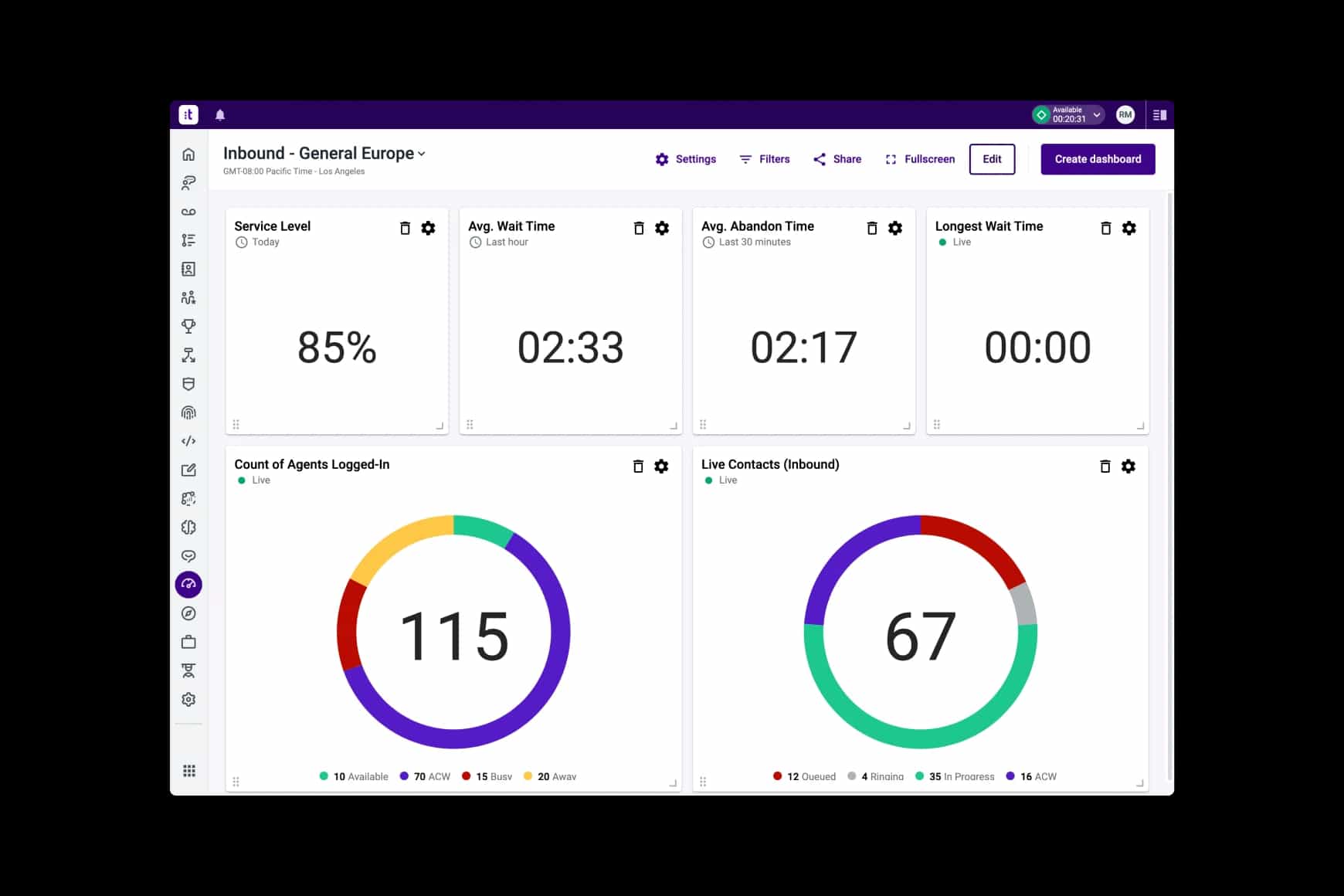
Talkdesk: Complete Buyer's Guide
Complete Buyer's Guide
Talkdesk represents a cloud-native contact center platform specifically engineered for retail and ecommerce operations through its comprehensive Retail Experience Cloud™ architecture.
Market Position & Maturity
Market Standing
Talkdesk occupies a premium position in the contact center as a service (CCaaS) market, historically recognized as a Gartner Leader in the 2020 CCaaS Magic Quadrant with the highest volume of verified peer reviews and enterprise scalability credentials[74].
Company Maturity
The platform serves enterprise customers across multiple continents, with implementations like Mercado Libre's five-country deployment showcasing global operational capabilities[63][71].
Industry Recognition
Industry recognition includes verified peer reviews and analyst acknowledgment, with Gartner's 2020 Leader positioning reflecting customer satisfaction and platform capabilities[74].
Strategic Partnerships
Strategic partnerships include deep integration relationships with Salesforce and major ecommerce platforms, providing technical advantages that strengthen market position[70].
Longevity Assessment
Long-term viability assessment indicates strong positioning for continued operation and growth within the retail technology ecosystem.
Proof of Capabilities
Customer Evidence
Vivino, a global wine marketplace, achieved a 4.41 Net Promoter Score during peak sales periods while resolving 2.6x more inquiries year-over-year with unchanged agent capacity[58][71]. Mercado Libre, Latin America's leading ecommerce platform, successfully deployed Talkdesk across five countries in 48 hours, managing 9 purchases per second with seamless scalability[63][71].
Quantified Outcomes
Quantified business outcomes consistently show measurable operational improvements. Teka reported a 4.7/5 customer satisfaction score alongside 25% agent workforce reduction after deploying Talkdesk AI Agents[62]. Farfetch documented 50% faster resolution times post-implementation[62].
Competitive Wins
Competitive displacement evidence emerges through customer migrations from established platforms. Multiple implementations involved transitions from legacy systems or competitor platforms, with customers citing Talkdesk's retail-specific capabilities and Salesforce integration as decisive factors[62].
AI Technology
Talkdesk's technical foundation centers on Talkdesk Autopilot for Retail, a generative AI system that handles complex ecommerce scenarios through contextual understanding rather than rule-based automation[65][68].
Architecture
Architecture advantages emerge through Talkdesk's cloud-native design and Salesforce-native integration. The platform's containerized architecture enables rapid deployment and scaling[63][71].
Primary Competitors
Genesys, Five9, and CloudTalk are main alternatives[59][60][72][73].
Competitive Advantages
Competitive advantages center on pre-built retail workflows requiring no custom coding, contrasting with Genesys's generic AI requiring significant customization for ecommerce use cases[65][68].
Market Positioning
Talkdesk historically positioned as Gartner Leader in the 2020 CCaaS Magic Quadrant, citing highest volume of verified peer reviews and enterprise scalability[74].
Win/Loss Scenarios
Win/loss scenarios favor Talkdesk for retailers requiring multilingual AI support, complex ecommerce workflow automation, and peak season scalability where premium pricing justifies advanced capabilities[58][62][63][71].
Key Features

Pros & Cons
Use Cases
Integrations
Pricing
Featured In Articles
Comprehensive analysis of Call Center Automation for Ecommerce for Ecommerce businesses and online retailers. Expert evaluation of features, pricing, and implementation.
How We Researched This Guide
About This Guide: This comprehensive analysis is based on extensive competitive intelligence and real-world implementation data from leading AI vendors. StayModern updates this guide quarterly to reflect market developments and vendor performance changes.
75+ verified sources per analysis including official documentation, customer reviews, analyst reports, and industry publications.
- • Vendor documentation & whitepapers
- • Customer testimonials & case studies
- • Third-party analyst assessments
- • Industry benchmarking reports
Standardized assessment framework across 8 key dimensions for objective comparison.
- • Technology capabilities & architecture
- • Market position & customer evidence
- • Implementation experience & support
- • Pricing value & competitive position
Research is refreshed every 90 days to capture market changes and new vendor capabilities.
- • New product releases & features
- • Market positioning changes
- • Customer feedback integration
- • Competitive landscape shifts
Every claim is source-linked with direct citations to original materials for verification.
- • Clickable citation links
- • Original source attribution
- • Date stamps for currency
- • Quality score validation
Analysis follows systematic research protocols with consistent evaluation frameworks.
- • Standardized assessment criteria
- • Multi-source verification process
- • Consistent evaluation methodology
- • Quality assurance protocols
Buyer-focused analysis with transparent methodology and factual accuracy commitment.
- • Objective comparative analysis
- • Transparent research methodology
- • Factual accuracy commitment
- • Continuous quality improvement
Quality Commitment: If you find any inaccuracies in our analysis on this page, please contact us at research@staymodern.ai. We're committed to maintaining the highest standards of research integrity and will investigate and correct any issues promptly.